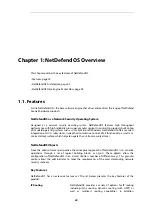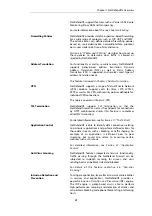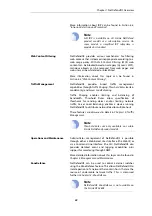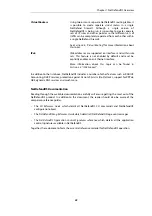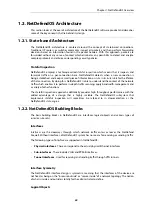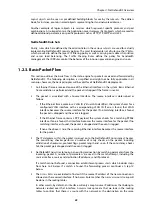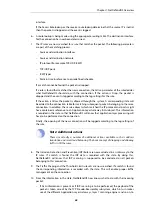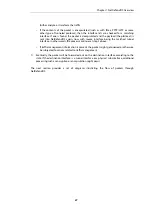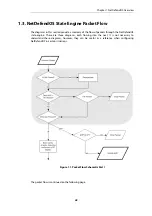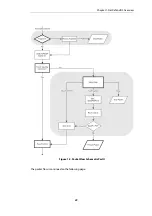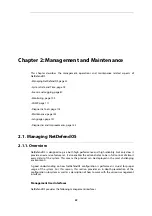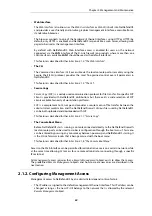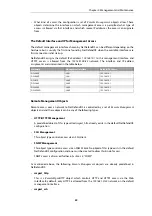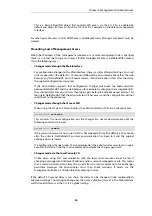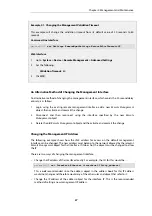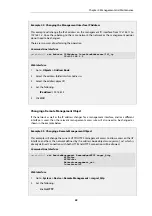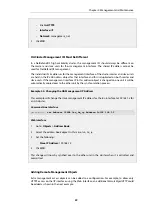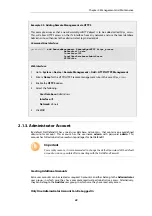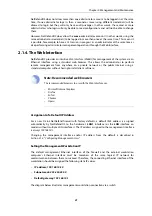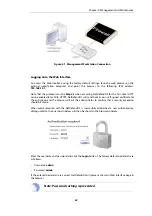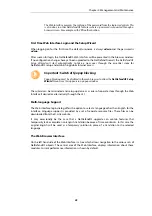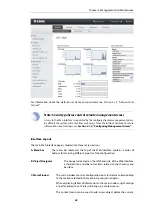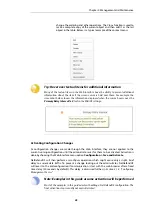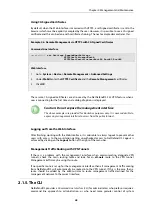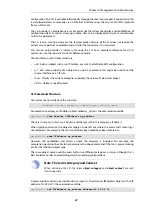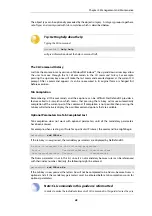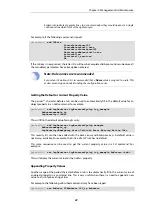
•
Web Interface
The
Web Interface
(also known as the
Web User Interface
or
WebUI
) is built into NetDefendOS
and provides a user-friendly and intuitive graphical management interface, accessible from a
standard web browser.
The browser connects to one of the hardware's Ethernet interfaces using
HTTP
or
HTTPS
(by
default, only HTTPS is enabled) and NetDefendOS responds like a web server, allowing web
pages to be used as the management interface.
By default with NetDefendOS, Web Interface access is enabled for users on the network
connected via the LAN interface of the D-Link firewall (on products where more than one
LAN interface is available, LAN1 should be used as the default interface).
This feature is described further in
Section 2.1.4, “The Web Interface”
•
The CLI
The
Command Line Interface
(CLI), accessible via the local console port or remotely using the
Secure Shell (SSH) protocol, provides the most fine-grained control over all parameters in
NetDefendOS.
This feature is described further in
.
•
Secure Copy
Secure Copy
(SCP) is a widely used communication protocol for file transfer. No specific SCP
client is provided with NetDefendOS distributions but there exists a wide selection of SCP
clients available for nearly all workstation platforms.
SCP is a complement to CLI usage and provides a secure means of file transfer between the
administrator's workstation and the NetDefend Firewall. Various files used by NetDefendOS
can be both uploaded and downloaded with SCP.
This feature is described further in
.
•
The Console Boot Menu
Before NetDefendOS starts running, a console connected directly to the NetDefend Firewall's
local console port can be used to do basic configuration through the
boot menu
. This menu
can be entered by pressing any console key between power-up and NetDefendOS starting. It
is the
D-Link firmware loader
that is being accessed with the boot menu.
This feature is described further in
Section 2.1.8, “The Console Boot Menu”
Access to the Web Interface can be permitted for administrative users on a certain network, while
at the same time allowing CLI access for a remote administrator connecting through a specific
IPsec tunnel.
All management access requires that a
Remote Management
object exists to allow that access.
The predefined
Remote Management
objects and how to create new ones are described in the
next section.
2.1.2. Configuring Management Access
Management access to NetDefendOS by an administrator depends on two factors:
•
The IP address assigned to the default management Ethernet interface. This IP address can be
changed as long as the new IP still belongs to the network that is allowed by the relevant
Remote Management
object.
Chapter 2: Management and Maintenance
34
Summary of Contents for NetDefendOS
Page 30: ...Figure 1 3 Packet Flow Schematic Part III Chapter 1 NetDefendOS Overview 30 ...
Page 32: ...Chapter 1 NetDefendOS Overview 32 ...
Page 144: ...Chapter 2 Management and Maintenance 144 ...
Page 284: ...Chapter 3 Fundamentals 284 ...
Page 392: ...Chapter 4 Routing 392 ...
Page 419: ... Host 2001 DB8 1 MAC 00 90 12 13 14 15 5 Click OK Chapter 5 DHCP Services 419 ...
Page 420: ...Chapter 5 DHCP Services 420 ...
Page 573: ...Chapter 6 Security Mechanisms 573 ...
Page 607: ...Chapter 7 Address Translation 607 ...
Page 666: ...Chapter 8 User Authentication 666 ...
Page 775: ...Chapter 9 VPN 775 ...
Page 819: ...Chapter 10 Traffic Management 819 ...
Page 842: ...Chapter 11 High Availability 842 ...
Page 866: ...Default Enabled Chapter 13 Advanced Settings 866 ...
Page 879: ...Chapter 13 Advanced Settings 879 ...

